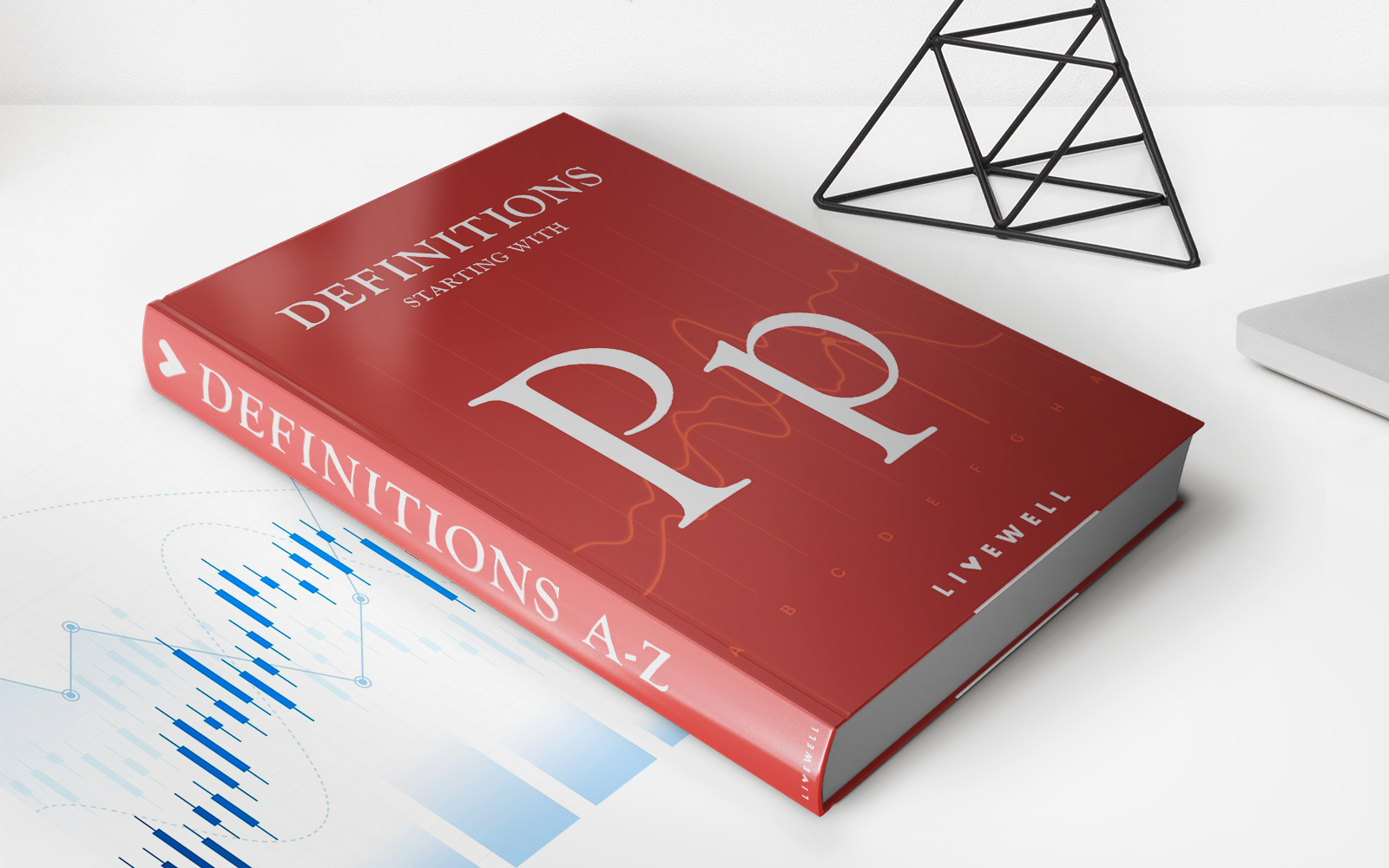Home>Finance>What Does A Pre-Approved Line Of Credit Or Revolving Credit Agreement Mean?


Finance
What Does A Pre-Approved Line Of Credit Or Revolving Credit Agreement Mean?
Modified: March 10, 2024
Learn the meaning of a pre-approved line of credit and revolving credit agreement in finance. Understand how these options can benefit you.
(Many of the links in this article redirect to a specific reviewed product. Your purchase of these products through affiliate links helps to generate commission for LiveWell, at no extra cost. Learn more)
Table of Contents
Introduction
Understanding the Power of Pre-Approved Lines of Credit and Revolving Credit Agreements
When it comes to managing personal or business finances, having access to a pre-approved line of credit or a revolving credit agreement can provide a valuable safety net and financial flexibility. These financial tools offer individuals and businesses the ability to access funds when needed, providing a sense of security and peace of mind.
Understanding the nuances of these financial instruments is crucial for making informed decisions about managing and leveraging credit effectively. In this article, we will delve into the definitions, benefits, and practical aspects of pre-approved lines of credit and revolving credit agreements, shedding light on how they can be harnessed to achieve financial goals and navigate unexpected expenses.
Whether you’re a seasoned business owner or an individual seeking to bolster your financial preparedness, gaining insights into the world of pre-approved lines of credit and revolving credit agreements can empower you to make sound financial choices and seize opportunities with confidence.
Definition of Pre-Approved Line of Credit
A pre-approved line of credit is a financial arrangement in which a lender extends a specified amount of credit to a borrower before the borrower actually needs it. This predetermined credit limit is based on the borrower's creditworthiness, financial history, and other relevant factors. Unlike a traditional loan, a pre-approved line of credit allows the borrower to access funds as needed, up to the approved limit, without needing to reapply for credit each time.
This type of credit facility provides a level of financial security and flexibility, as the funds are readily available for use when unexpected expenses arise or when additional capital is required for planned ventures. It can be likened to a financial safety net, offering reassurance that funds are accessible without the delays associated with applying for a new loan or credit extension.
Pre-approval for a line of credit typically involves a thorough assessment of the borrower's financial standing, including credit score, income stability, and existing debt obligations. Once approved, the borrower can tap into the available credit at their discretion, making it a valuable tool for managing cash flow, handling emergencies, and seizing time-sensitive opportunities.
One of the key advantages of a pre-approved line of credit is its flexibility. The borrower has the freedom to borrow as much or as little as needed, within the approved limit, and only pays interest on the amount borrowed. This feature distinguishes it from a conventional loan, where the entire amount is disbursed upfront, and interest accrues on the full sum from the outset.
In essence, a pre-approved line of credit empowers borrowers to proactively manage their financial needs, providing a financial cushion that can be utilized strategically to address various monetary requirements. Whether it's covering unforeseen expenses, making timely investments, or bridging temporary cash flow gaps, a pre-approved line of credit offers a versatile and accessible means of securing funds.
Understanding Revolving Credit Agreement
A revolving credit agreement is a flexible financial arrangement that allows borrowers to access funds up to a predetermined credit limit, repay the borrowed amount, and then borrow again. Unlike installment loans, where the borrower receives a lump sum upfront and repays it over a fixed term, a revolving credit agreement enables ongoing access to funds within the specified limit, with interest charged on the outstanding balance.
This type of credit facility is commonly associated with credit cards and lines of credit. With a revolving credit agreement, borrowers have the freedom to borrow, repay, and re-borrow up to the approved limit, providing a continuous reservoir of funds for various financial needs. The revolving nature of this credit arrangement distinguishes it from traditional loans, offering greater flexibility and convenience.
One of the defining features of a revolving credit agreement is the revolving period, during which the borrower can utilize the available credit, make repayments, and access the funds again. This cycle continues as long as the borrower adheres to the terms and conditions of the agreement, making timely payments and managing the credit responsibly.
Furthermore, revolving credit agreements often come with a minimum monthly payment requirement, giving borrowers the option to carry a balance from month to month while meeting the stipulated payment obligations. This flexibility in repayment allows borrowers to manage their cash flow and address financial needs without being constrained by rigid repayment schedules.
Additionally, the interest charged on the outstanding balance in a revolving credit agreement is typically variable, meaning it can fluctuate based on market conditions and other factors. Borrowers should be mindful of this aspect and consider its potential impact on their overall cost of borrowing when utilizing revolving credit facilities.
Overall, a revolving credit agreement offers a dynamic and adaptable approach to accessing funds, catering to the evolving financial requirements of individuals and businesses. By understanding the mechanics of revolving credit and its implications, borrowers can leverage this financial tool effectively to support their ongoing financial endeavors and navigate cash flow fluctuations with agility.
Benefits of Pre-Approved Line of Credit
A pre-approved line of credit offers a range of advantages that can significantly enhance a borrower’s financial flexibility and preparedness. Understanding these benefits is crucial for individuals and businesses seeking to leverage credit effectively and navigate financial uncertainties with confidence.
- Financial Security: One of the primary benefits of a pre-approved line of credit is the sense of financial security it provides. Knowing that a predetermined credit limit is available for use offers reassurance, especially in situations where unexpected expenses or opportunities arise.
- Immediate Access to Funds: Unlike traditional loans that require a new application and approval process for each disbursement, a pre-approved line of credit allows borrowers to access funds promptly when the need arises, eliminating delays and administrative hurdles.
- Flexibility in Borrowing: Borrowers have the flexibility to access funds as needed, up to the approved limit, without being bound by rigid borrowing schedules or fixed repayment terms. This adaptability makes it an ideal solution for managing fluctuating financial needs.
- Interest Savings: By accessing funds only when necessary and repaying the borrowed amount promptly, borrowers can potentially save on interest costs compared to traditional loans where interest accrues on the entire amount disbursed upfront.
- Strategic Financial Management: A pre-approved line of credit empowers borrowers to strategically manage their financial resources, allowing them to seize time-sensitive opportunities, address urgent financial obligations, and optimize cash flow without disrupting long-term financial plans.
- Building Credit History: Responsible utilization of a pre-approved line of credit can contribute to building a positive credit history, provided that payments are made on time and the credit facility is managed prudently. This can have long-term benefits for the borrower’s overall credit profile.
These benefits collectively underscore the value of a pre-approved line of credit as a versatile and reliable financial tool, offering a safety net for unforeseen expenses, a strategic resource for seizing opportunities, and a means of optimizing financial management without the constraints of traditional borrowing arrangements.
How to Obtain a Pre-Approved Line of Credit
Securing a pre-approved line of credit involves a series of steps aimed at demonstrating creditworthiness and financial stability to potential lenders. While the specific requirements and processes may vary among financial institutions, the following general guidelines can help individuals and businesses navigate the process of obtaining a pre-approved line of credit:
- Evaluate Credit Profile: Before initiating the application process, it is advisable to review and understand your credit report. Identifying any inaccuracies or areas for improvement can help in presenting a stronger credit profile to potential lenders.
- Research Lending Institutions: Explore various financial institutions, including banks, credit unions, and online lenders, to compare their offerings and assess the suitability of their pre-approved line of credit products. Consider factors such as interest rates, credit limits, and repayment terms.
- Complete Application: Once a suitable lender is identified, complete the application for a pre-approved line of credit. This may involve providing personal or business financial information, including income documentation, existing debts, and assets.
- Undergo Credit Assessment: The lender will conduct a comprehensive assessment of the applicant’s creditworthiness, considering factors such as credit score, payment history, and debt-to-income ratio. This evaluation determines the approved credit limit and terms.
- Review and Accept Offer: Upon successful evaluation, the lender will extend a pre-approved line of credit offer outlining the approved limit, interest rates, and any associated fees. Review the offer carefully and accept the terms if they align with your financial needs and objectives.
- Utilize Responsibly: Once the pre-approved line of credit is in place, it is essential to utilize the funds responsibly, making strategic decisions about when and how to access the credit to support financial goals and obligations.
By following these steps and engaging in proactive financial management, individuals and businesses can position themselves to obtain a pre-approved line of credit that aligns with their financial requirements and offers the flexibility and security needed to navigate various financial scenarios.
Managing a Revolving Credit Agreement
Effectively managing a revolving credit agreement is essential for maximizing its benefits while maintaining financial stability. Whether utilizing a credit card or a traditional line of credit, the following strategies can help borrowers navigate the dynamics of a revolving credit arrangement:
- Monitor Credit Utilization: Keeping track of the amount borrowed relative to the approved credit limit is crucial. Striving to maintain a healthy credit utilization ratio—ideally below 30%—can positively impact credit scores and demonstrate responsible credit management.
- Timely Repayments: Adhering to the repayment schedule and making at least the minimum payment on time is imperative. Late or missed payments can result in penalty fees, increased interest charges, and negative effects on credit scores.
- Strategic Borrowing: While the revolving nature of the credit agreement allows for flexibility in borrowing, it’s prudent to borrow sensibly, considering the purpose and timing of the expenditures. Avoiding unnecessary or impulsive borrowing can contribute to better financial outcomes.
- Interest Management: Being mindful of the interest rates associated with the revolving credit agreement is essential. Understanding how interest accrues on the outstanding balance and exploring opportunities to lower interest costs can lead to long-term savings.
- Regular Review of Terms: Periodically reviewing the terms and conditions of the revolving credit agreement can provide insights into any changes in interest rates, fees, or credit limits. Staying informed about the evolving aspects of the agreement is key to proactive credit management.
- Balance Paydown Strategies: When carrying a balance on a revolving credit account, devising a structured plan to pay down the debt efficiently can mitigate interest expenses and contribute to overall financial well-being.
By implementing these practices and maintaining a disciplined approach to managing a revolving credit agreement, borrowers can harness the benefits of ongoing access to funds while safeguarding their financial standing and creditworthiness. Strategic utilization and responsible management of revolving credit can pave the way for improved financial resilience and long-term financial success.
Conclusion
In the realm of personal and business finance, the concepts of pre-approved lines of credit and revolving credit agreements represent valuable tools for managing cash flow, addressing financial needs, and navigating the dynamic landscape of monetary requirements. These financial instruments offer a level of flexibility and accessibility that can empower individuals and businesses to respond to unexpected expenses, seize opportunities, and optimize their financial resources.
By understanding the nuances of pre-approved lines of credit, borrowers gain insight into the benefits of having a predetermined credit limit at their disposal, providing a sense of security and readiness for various financial scenarios. The flexibility and strategic utility of a pre-approved line of credit enable borrowers to proactively manage their financial needs and make informed decisions about borrowing and repayment.
Likewise, the revolving nature of credit agreements, whether in the form of credit cards or traditional lines of credit, offers a dynamic approach to accessing funds and managing ongoing financial requirements. The ability to borrow, repay, and re-borrow within the approved limit provides a level of adaptability that aligns with the evolving needs of borrowers, fostering financial agility and responsiveness.
Ultimately, the prudent utilization and responsible management of these credit facilities are paramount. By adhering to best practices in credit utilization, repayment, and strategic borrowing, individuals and businesses can harness the benefits of pre-approved lines of credit and revolving credit agreements while safeguarding their financial well-being and credit standing.
As borrowers navigate the terrain of credit management, the insights and strategies presented in this article serve as a guide for leveraging these financial tools effectively, optimizing cash flow, and fostering financial resilience. By embracing the opportunities afforded by pre-approved lines of credit and revolving credit agreements, borrowers can embark on a journey toward financial empowerment and stability, equipped with the knowledge and tools to navigate the complexities of the modern financial landscape.














